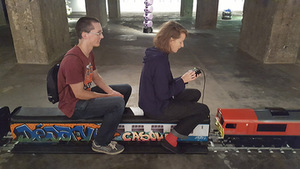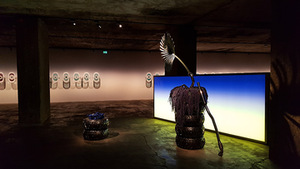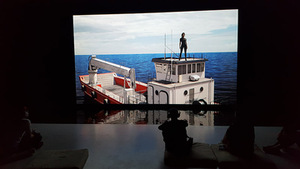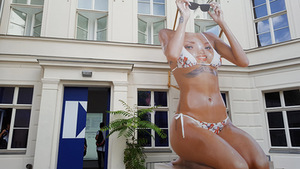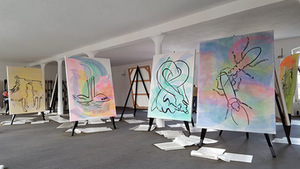Berlin contemporary art biennial resonances 5
In brief: The 9th Berlin Biennial - one of the most famous European contemporary art exhibitions - this year is taking place from June to September. It seems that we visit it less than the popular Venice biennial, Documenta in Kassel or Manifesto which constantly changes its location. After all, it is quite paradoxical: Berlin is not that far from Lithuania and the biennial project organized there is as good as the mentioned exhibitions, both with its size and the artistic intrigue.
Usually, the biennial is organized by different guest curators who are able to originally convey the issues of contemporary art. Most importantly, they should share a modern point of view, openness to the contemporary world and interest in the future prospects. The curators of the 2016 biennial are DIS group that consists of four young artists from New York. They are Lauren Boyle, Solomon Chase, Marco Roso and David Toro. Thanks to the aforementioned curators, fifty individual artists and groups from all over the world aimed at disclosing the artistic possibilities of the present in Germany. The Berlin Biennial was named The Present in Drag.
Interesting Swedish artist Anna Uddenberg stood out at the Academy of Arts exhibition space. She creates women-like sculptures from plastic and industrial items, clothes, textiles. Here, body is used as a core idea and it is presented in different ways: as a sexual object, as a possibility of transformation, as an environment for new hobbies and challenges.
Simon Fujiwara's installation The Happy Museum conveys two human stories including past and present relationships, as well as expressing the relationship between generations. The video features a woman from South America and a European man who explain how different their lives and their children's lives were (youth, studies, job and etc).
People who found themselves on the terrace, on the roof of Academy of Arts, may have been shaken by an example of Jon Rafman's site-specific installation, visible through the virtual reality glasses. Instead of an urban landscape the viewer can see a magnificent ocean view.
The second exhibition location was the ESMT (European School of Management and Technology). ESMT's sport's hall featured a very interesting work, moving and inspiring at the same time - artist collective GCC presented an installation Positive Pathways. The topic of this installation (self-optimization and striving for success) affected positively and was quite hypnotic.
The third venue of the biennial was a private art museum The Feuerle Collection located in the Second World War bunker. When in the room, it is impossible not to notice a large glass installation Window seat 10–22F by Yngve Holen. Bunker also features Andree Korpys and Markus Löffler's video film that tells a story of a functioning business center in a large city - an architectural, technological, economic and informational monster.
The fourth exhibition venue, which housed the headquarters of the biennial, was a KW Institute for Contemporary Art. Here people were able to see associative works by very famous video artists - Wu Tsang and Josh Kline.
Photos by Raimonda Simanaitienė























